15% off £40
What is skinimalism and is it for you?
.png)
What is skinimalism?
According to Pinterest’s Trend Predictions Report, ‘Skinimalism is the new glow up’.1 Gone are the days of glorified plastered on make-up and cake-y faces; more and more people are embracing ‘slow’ beauty to let their natural skin texture shine. Not only is skinimalism a breath of fresh air for your skin, it’s also refreshingly simple.
What is skinimalism
How does skinimalism work?
There are no set rules when it comes to this beauty trend. The aim is to help protect the skin by keeping things simple.
When we go overboard with different products, swap and change techniques willy-nilly, and combine too many active ingredients, our skin can get overwhelmed and overstimulated.
Ultimately, this can confuse our skin and means we won’t see the benefits we tried so hard to achieve in the first place.
Is skinimalism for you?
While trends come and go, there’s something about skinimalism that resonates with life.
- It clears out your cabinet
Skinimalism aims to cut down on our usage and focus on the products that benefit us. It’s no longer about buying the whole range, but about incorporating a select few items into our daily skincare routine.
Of course, this is a huge weight off our wallets. But it might also lead us to consider more carefully the role and benefit of each product for our individual lifestyle and skin type.
- It simplifies your routine…
Maybe there’s a serum out there that does the job of three of your current products. It goes without saying that cutting down on your skincare products means a far more efficient skincare routine. Not only can you grab a few extra minutes in bed, but you’re far more likely to commit to a routine that feels achievable and motivating.
- …and can help you establish a new one
A regular, efficient skincare regime is far more likely to work wonders on your skin than a long, pointless, inconsistent one. Some of us just don’t enjoy the process of “pampering” with product after product. Or, we do, but maybe only once a week… and it’s the first thing to disappear when life gets busy.
A 10-minute process where you know everything makes a difference? That’s more like it.
- It’s potentially cheaper
With the rising cost of living, we’re forced to think about what we can and can’t let go of. While it’s never a blessing to be forced into thriftiness, skinimalism could help us save a few extra pounds when they need to go elsewhere.
- Less products could equal fewer triggers
Surely the point of all our skincare products is that they improve our skin. But overdoing it could congest, dry out, or make your face more sensitive. Your routine will work far better on a clean slate than skin that’s still recovering from yesterday’s barrage of products. This is particularly important given the effortless-yet-glowing finish that “clean girl” makeup has introduced.
So, what now?
Fancy giving skinimalism a try? Here are a few pointers from the H&B beauty team:
- Be careful combining active ingredients
A lot of people incorporate several one-ingredient beauty goodies into their routine, thinking they're being super-attentive to their skin’s every need. However, some active ingredients will work against each other, some will enhance each other, and some will simply do the same thing.
Layering product after product can cause “pilling” (the tiny clumps that sit on the surface of your skin). This is especially the case when you’re mixing oil- and water-based beauty. Our advice is to leave this to the professional skincare formulators and go for fewer, well-made formulas.
- Mind your timing
The time-saving element of skinimalism is definitely a plus. But don’t fall into the trap of thinking you can slap everything on in five minutes.
Some products need time to soak in or can make your skin temporarily sensitive. For example, vitamin C and retinol are safe to use a few hours apart, but can cause irritation together. Using products in the best, safest way will help keep you glowing just as skinimalism intended.
- Celebrate your small wins
It’s not just your skin and bank balance that can take the hit in an excessive skin routine. This way, you’re cutting down on some of the environmental damage that production lines, packaging, and transport can amass
Our favourite products to achieve skinimalism
We’ve rounded up some of our products for you to start your skinimalism journey. True to the minimal ethos, you won’t need them all – but each versatile pick can help you build a routine that’s right for you.
Cleansers
Cleanser for dry and sensitive skin
Dry and sensitive skin tends to like hydrating, creamy cleansers that clear away dirt without stripping your skin of oils.
If you’re a fan of double-cleansing, we’d recommend an oil-based, balm, or cream cleanser to begin with. Then, move onto a very gentle foaming cleanser or gel cleanser for your second cleanse at night.
Cleanser for oily or combination skin
Oily skin tends to be prone to blemishes and breakouts, so you should go for a foaming cleanser that contains exfoliating acids like salicylic acid.
Salicylic acid is a BHA (beta hydroxy acid), a chemical exfoliant which helps shift dead skin cells from the top layer of your skin. It reveals a new, fresh layer, which can help you look smoother and brighter.
AHAs (alpha hydroxy acids) produce similar effects, but they can also help to lighten dark spots, redness, and hyperpigmentation.
Cleansers for "normal" skin
Everyone’s skin is different, but you can’t go too wrong with a cleanser on “normal” skin. You’re lucky that gels, balms, and cream cleansers should all work for you.
Focus on finding one that’s kind to skin, but effective at removing dirt, oil, and makeup, too.
SPF
One very, very important skincare product you should keep in your arsenal is a high-quality SPF. SPF products protect your skin against the sun’s UVA and UVB rays. They can help to delay or improve the appearance of signs of ageing, like fine lines, wrinkles, and hyperpigmentation.
Look for a broad spectrum SPF, which protects against both UVA and UVB rays. Also, it’s best to understand what the numbers on the bottle mean. You’ll know the factor (for example, 15, 30, or 50). Use 30 or higher every day, even if it’s not sunny outside.
It’s easy just to look at the factor, but you should also check out the PA rating if provided – this is the UVA cover specifically. They range from PA+ to PA++++, with PA++++ providing the most UVA protection.
SPF + moisturiser
Serums
Next, it’s time to get your glow on! Antioxidant-rich vitamin C serums and hydrating hyaluronic serums are a good place to start for most.
They’re both kind to most skin types, but they offer different benefits:
- vitamin C is a powerful antioxidant and helps protect against free radical damage caused by UV rays and pollution. It can also help to brighten your complexion
- hyaluronic acid is a super hydrator that can hold up to 1000 times its weight in water.² It’s a go-to for moisturised, glowing skin
Holland & Barrett Vitamin C + Hyaluronic Acid Serum, 30ml
- Brightens for happier, healthier-looking skin
- Moisturises, refreshes, and restores for a natural glow
- Helps to shift dull, dry patches
- Suitable for normal and combination skin types
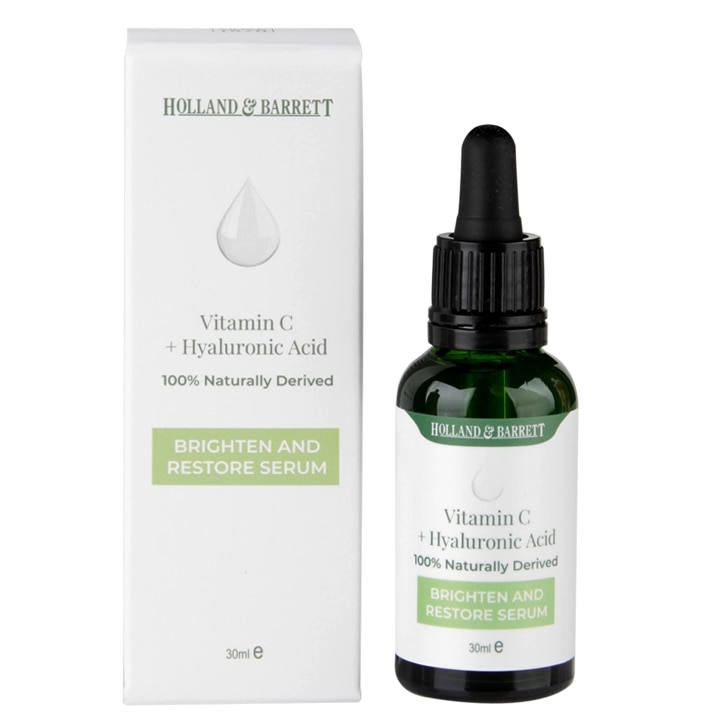

Vitamin C serum
Vitaskin Vitamin C Collagen Boosting Serum
- Vitamin C may support smoother, brighter skin
- Suitable for all skin types (especially dry)
- Super-hydrating without being heavy
- Rich in antioxidants to help plump the skin
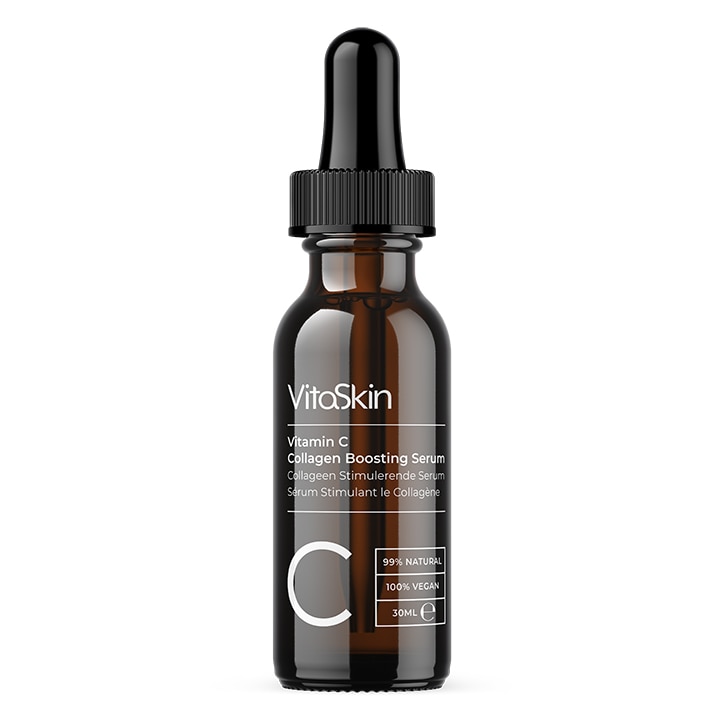

Moisturisers
There’s no doubt that keeping your skin moisturised and hydrated is key for glowing, healthy skin. But, as we discussed above, when it comes to moisturisers’ less is often more. Instead, try investing in one high-quality moisturiser instead of slathering on a both a day and night cream every day.
Moisturiser for dry and sensitive skin
A good moisturiser for dry and sensitive skin will contain rich, hydrating ingredients like shea butter.
Weleda Skin Food Light, 75ml
- Certified natural skin care
- Free of synthetic preservatives, fragrances, colourants, and raw materials
- Derived from mineral oils
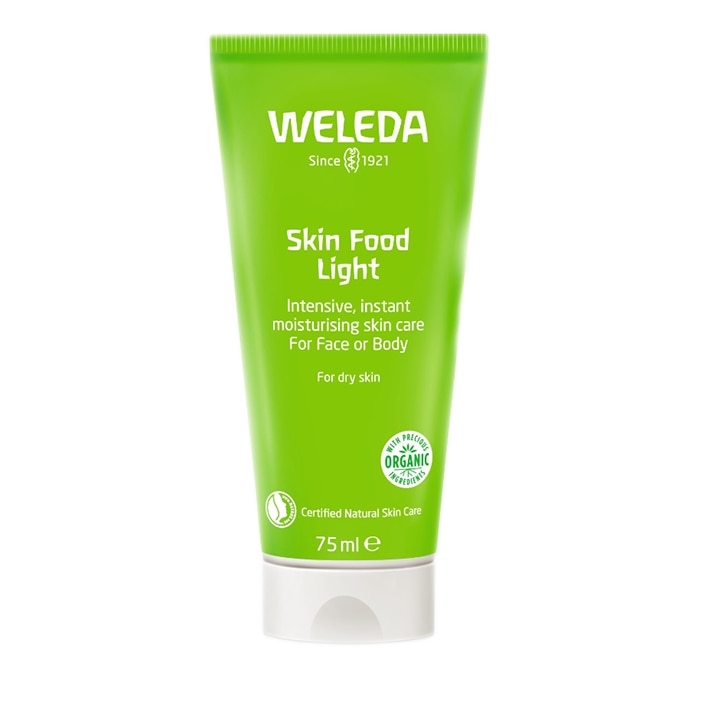

Moisturiser for oily skin
Oily skin needs hydration, too! Even if seems counterproductive, it’s important, as hydration is different from sebum (oil) production.
Skin produces sebum in response to dryness – so if your oily skin isn’t receiving the moisture it needs, it will compensate by becoming even more oily. Choose a hyaluronic acid serum to hydrate your oily skin. Then, opt for a lightweight moisturise that helps lock in hydration while keeping greasiness at bay.
Sea Magik Flat Matte Epsom Moisturiser
- Promotes a matte finish
- Ideal for use as a makeup primer
- Formulated with Epsom salt minerals and strengthening seaweed
- Leaves skin hydrated without excess shine
- Contains soothing aloe vera to calm your complexion
- Suitable for all skin types, particularly oily, combination, and blemish-prone skin
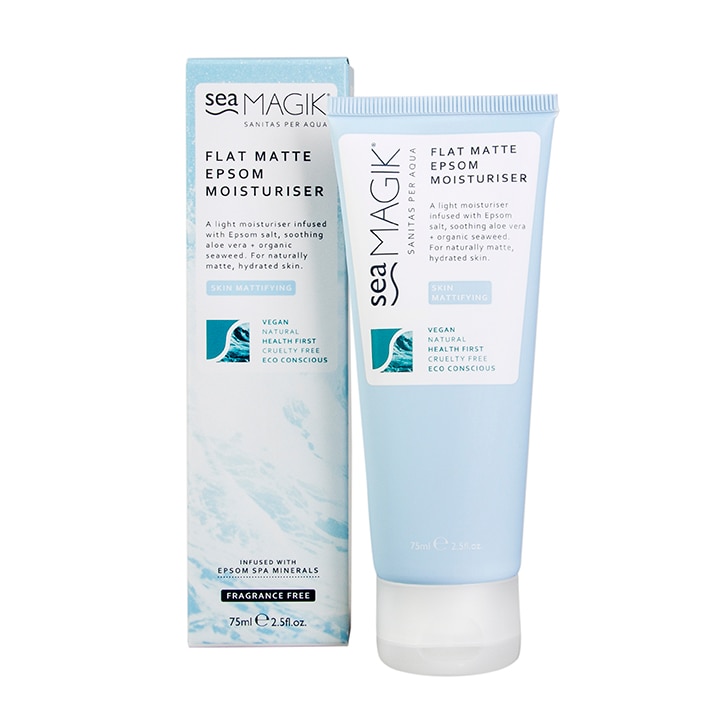

Moisturiser for 'normal skin'
If your skin is not dry or oily, you have a lot more freedom when it comes to moisturisers.
BB and CC creams
Skinimalism is all about the “barely there” – the products that enhance your natural beauty without the effort or excess. If heavier foundation isn’t your thing (or you just fancy a lighter day), BB and CC creams are a great way of evening out your skin tone.
Short for beauty/blemish balm and colour correcting creams, they’ll provide light coverage and a little extra hydration. BB creams are the lightest in coverage, while CC creams offer a little more – though they’re still more subtle than your usual foundation.
Night treatment
When the day is done and your feet are well and truly up, try extending that rest and relaxation to your skin. After cleansing the day away, a good retinoid or bio-retinoid night serum, oil, or cream can show your skin some TLC – especially if you’re over 25.
However, please note: don't use retinol, retinoids, or vitamin A derivatives if you're pregnant or breastfeeding.
VitaSkin Vitamin A Rejuvenating Night Serum
- This powerful Serum is packed with retinoids and carrot seed oil
- Contains high levels of vitamin A and vitamin E
- Helps promote softer, smoother and visibly younger-looking skin
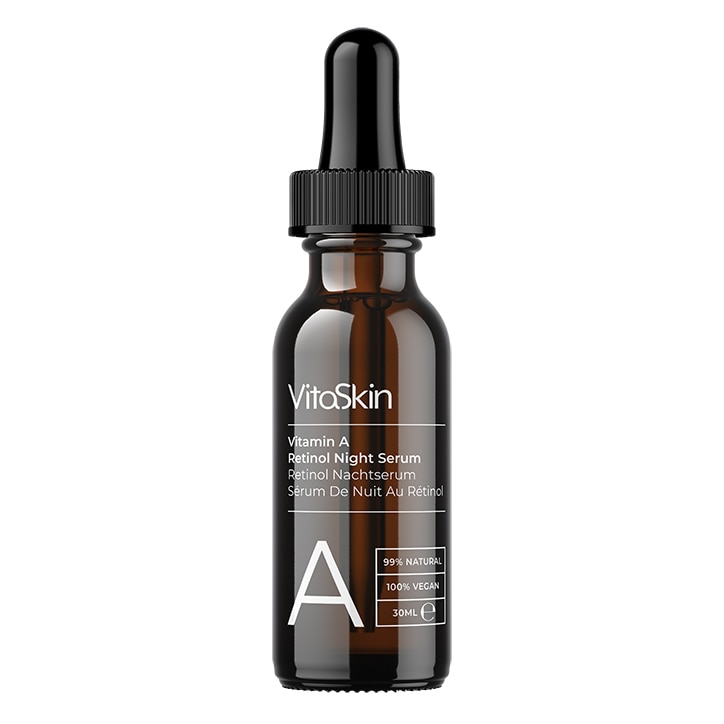

REN Bio Retinoid Youth Concentrate Oil
- White Beggar’s Tick Flower extract smooths the appearance of wrinkles and renews skin texture
- Plant-based retinol alternative, bakuchiol, has similar effects when it comes to softening fine lines
- Rosehip seed oil is a source of vitamin A and can help contribute towards a more youthful appearance
- Gentle enough for sensitive skin
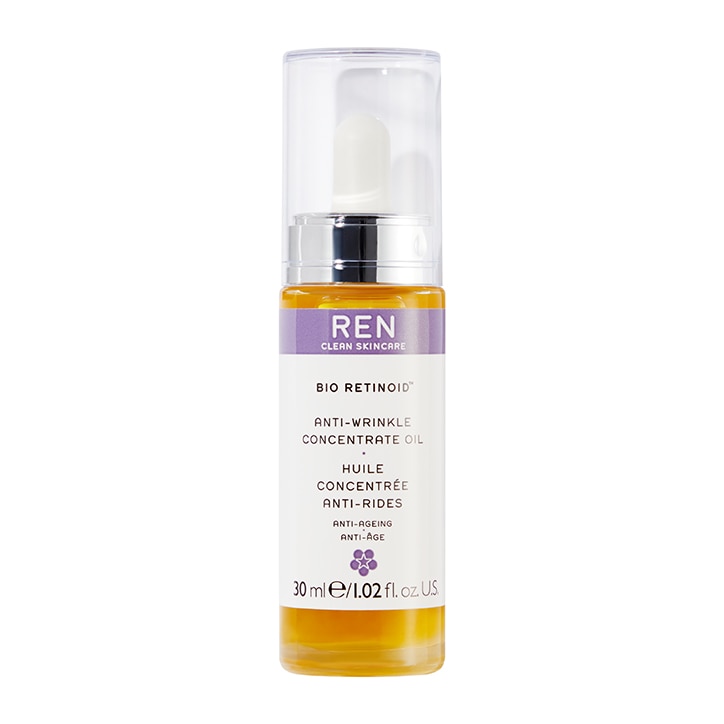

Oleus Retinol Serum
- Uses retinol, which can help minimise fine lines and support more youthful-looking skin⁴
- Ideal for dry, dehydrated, and mature skin
- Suitable for use alone or mixed into the Oleus Oil Free Moisturiser
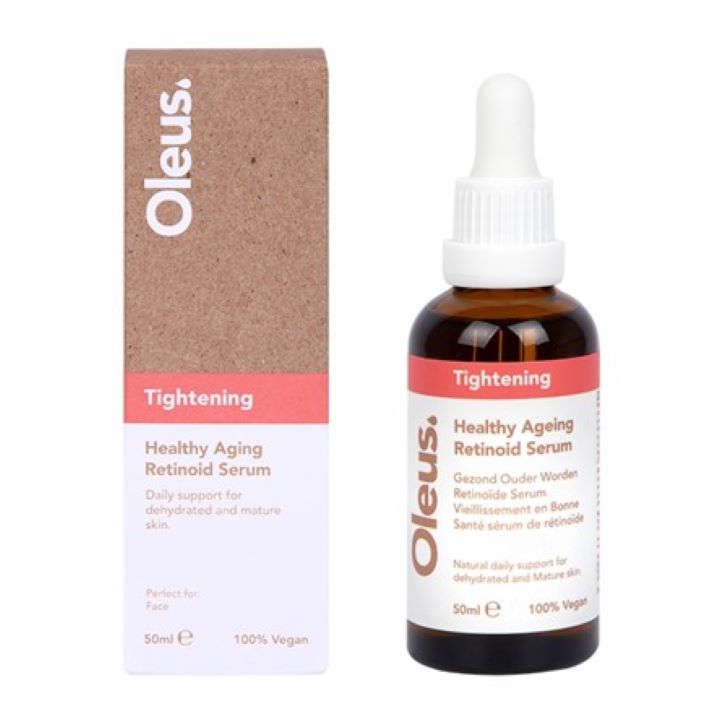

If you have dry skin, it’s advised you follow with a moisturiser (no special night cream necessary).
Please also remember that retinoids can cause irritation and sensitivity, which is why you should gradually build up to using it every day. Try using it twice a week at first and slowly increase from there while monitoring how your skin reacts to it, and always use an SPF in the day.
Those with dry and sensitive skin might prefer a “sandwich approach”, where you can buffer the effects of retinoids by using a moisturiser before and after use. Try using it twice a week at first and slowly increase from there while monitoring how your skin reacts to it. Always use an SPF of at least 30, no matter the weather.
The final say
- Using lots of different skincare products may not be suitable for everyone – they cost a lot, can take time, and may contribute to skin sensitivity and redness
- “Skinimalism” is a beauty trend that encourages you to focus on skincare quality, not quantity
- It suggests that using fewer products with high-quality formulations can be better for your skin than using lots of different types
- It also encourages people to embrace their natural skin appearance and texture
- It’s not for everyone, though. If you have skin concerns, always consult with a professional who can advise you individually
Last updated: 16 January 2023
- https://business.pinterest.com/en-gb/pinterest-predicts/2021/skinimalism/
- https://www.researchgate.net/publication/272175669_Hyaluronan_Hyaluronic_Acid_a_natural_moisturizer_for_skin_care
- https://onlinelibrary.wiley.com/doi/full/10.1111/bjd.16918
- https://www.ncbi.nlm.nih.gov/pmc/articles/PMC3834457/














